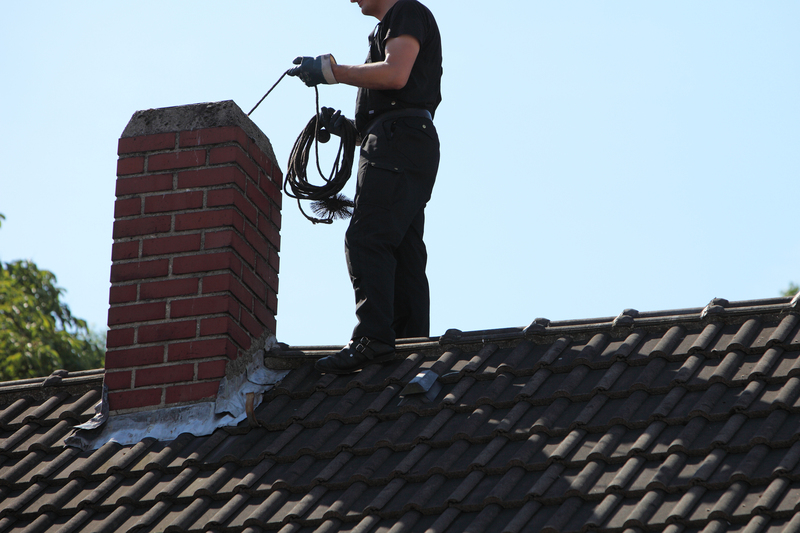Transform Your Space by Removing Damp Scents
Posted on 11/06/2025
Transform Your Space by Removing Damp Scents
Are stale, musty odors transforming your home or office into an uncomfortable environment? Damp smells not only affect the ambiance of your living space but can also impact your health and daily comfort. If you've ever walked into a room and been greeted by an unpleasant, lingering damp odor, you're not alone. This issue affects thousands of households and workspaces. Fortunately, there are proven solutions to eliminate damp scents and restore freshness to your environment.
Understanding Damp Scents: Causes and Impact
Damp odors are often a sign of excess moisture or humidity in the air, usually stemming from:
- Poor ventilation in bathrooms, basements, or attics
- Water leaks from pipes, roofs or walls
- Condensation on windows and cold surfaces
- Flooding or water damage
- High humidity due to climate or lack of air flow
Dampness encourages the growth of mold, mildew, and bacteria, all of which contribute to foul smells and may cause adverse health effects such as allergies, asthma, or respiratory issues. In addition, these odors can:
- Lower property value and appeal
- Damage furniture, carpets, and clothing
- Create an inhospitable atmosphere
Transforming your room by removing damp scents is not only about aesthetic improvement--it's also about promoting a healthy, comfortable, and inviting space for yourself, your family, or guests.

Why It's Important to Address Damp Odors Promptly
Simply masking damp odors with air fresheners or candles will not solve the underlying problem. Left untreated, persistent dampness can:
- Accelerate structural damage to your property
- Worsen existing health problems
- Contribute to the spread of mold spores
The longer you wait, the more difficult it becomes to eradicate musty scents and their root causes.
Effective Strategies to Remove Damp Scents and Revitalize Your Space
Banishing damp odors requires a systematic approach that identifies sources of excess moisture and employs effective odor removal methods. Here is a comprehensive guide to transforming your space:
1. Identify and Fix Moisture Sources
- Inspect for Leaks: Examine sinks, pipes, ceilings, and around windows for signs of leaks or water intrusion. Fix any sources immediately.
- Check Roofing and Gutters: Blocked gutters or damaged roofs often cause water seepage. Regular maintenance prevents problems.
- Ventilate and Dehumidify: Use extractor fans in kitchens, bathrooms, and laundry areas. Install a quality dehumidifier to lower overall humidity levels.
- Seal Windows and Doors: Drafty or improperly sealed windows attract condensation and moisture. Use weather-stripping where necessary.
2. Enhance Air Circulation
- Open Windows Daily: Even in cooler months, allow fresh air to circulate for at least 15-30 minutes per day.
- Use Exhaust Fans: In high-moisture areas like bathrooms, always use fans during and after use.
- Move Furniture: Place furniture a few inches from walls to allow airflow and minimize damp buildup.
3. Clean and Treat Affected Areas
- Wash Fabrics: Damp smells cling to curtains, carpets, cushions, and clothing. Launder or steam clean these items.
- Disinfect Hard Surfaces: Mix distilled white vinegar and water (1:1) to wipe down walls, tiles, and floors--it neutralizes mildew and odors naturally.
- Apply Baking Soda: Sprinkle onto carpets, let sit overnight, and vacuum up to absorb lingering smells.
- Address Mold Immediately: Use a dedicated mold remover or call a professional for advanced infestations. Always wear gloves and a mask when handling mold.
4. Use Natural Odor Absorbers and Purifiers
- Charcoal Bags: These naturally absorb both moisture and odors--place them in closets, bathrooms, or under sinks.
- Baking Soda: Open containers in problematic areas to continually neutralize smells.
- Houseplants: Some indoor plants, like peace lilies and Boston ferns, help purify air and reduce humidity.
5. Deep-Clean Carpets and Upholstery
- Steam Cleaning: High-heat steam not only cleans but also kills odor-causing mold and bacteria.
- Professional Cleaning: Consider having carpets and upholstery cleaned by professionals if odors persist.
6. Maintain a Low-Humidity Environment
- Monitor Humidity: Use a hygrometer to keep indoor humidity between 30% and 50%.
- Use a Dehumidifier: Especially important in basements or during rainy seasons.
Long-Term Prevention: Keep Damp Odors Away for Good
Removing musty odors is only the first step. Adopting proactive habits and upgrades will prevent recurrence:
- Regular Maintenance: Inspect plumbing, roofs, and ventilation systems on a schedule.
- Proper Insulation: Ensure that your home is well-insulated, especially in attics and basements.
- Use Desiccants: Calcium chloride or silica gel can be placed in problem spots to absorb excess moisture.
- Keep Gutters Clean: Clogged gutters cause leaks--clean them at least twice a year.
- Store Items Wisely: Avoid stacking boxes and items against walls in basements and attics.
Bonus Tips for a Fresh-Smelling Space
- Simmer Citrus Peels and Spices: Add lemon or orange peels with a few cloves or cinnamon sticks to water and simmer on the stove. The aroma fills your home naturally.
- DIY Air Sprays: Mix distilled water with essential oils (like eucalyptus or lavender) for a non-toxic freshener.
- Dry Laundry Properly: Never leave wet laundry indoors; always dry clothes outside or use a tumble dryer.
- Utilize Sunlight: Sunlight is a natural deodorizer and bacteria killer--air out rugs, cushions, and pillows in the sunshine whenever possible.
Common Myths About Removing Damp Scents
There's no shortage of home remedies and advice floating around, but not all are effective. Here are some common myths debunked:
- "Air fresheners will mask and solve the issue." While these cover up odors temporarily, they don't address the underlying cause of damp.
- "Only old homes get musty smells." Any building can experience condensation, leaks, or poor ventilation regardless of age.
- "Opening windows isn't necessary in winter." Briefly airing out rooms in winter is vital to replace stale, damp air with fresh air.
The Health Benefits of a Fresh, Odor-Free Space
Eliminating damp odors transforms your space not just aesthetically but also physically and emotionally:
- Reduced allergy and asthma symptoms due to lower mold and dust mite presence
- Better sleep and relaxation in a pleasant-smelling environment
- Enhanced productivity and focus in workspaces without distractions from unpleasant smells
- Improved overall morale and comfort for everyone in your home or office

When to Seek Professional Help
While most cases of damp odors can be handled through diligent cleaning and moisture control, some issues may require expert intervention. Contact a professional for:
- Widespread mold growth or water damage
- Persistent odors despite your efforts
- Issues affecting structural integrity, like rotting wood
Specialists can conduct thorough inspections, use industrial-grade equipment, and recommend repairs or treatments tailored to your building's needs. Do not risk your health or your property's value--seek help when necessary.
Conclusion: Transform Your Home By Eliminating Damp Odors for Good
An inviting, fresh-smelling space boosts well-being, improves productivity, and enhances your quality of life. Damp scents are more than a minor annoyance--they indicate underlying problems that need attention. Through the combination of identifying sources, improving ventilation, regular cleaning, and adopting long-term prevention strategies, you can successfully eliminate musty odors and enjoy a welcoming, healthy environment year-round.
Ready to revive your space? Implement these proven steps today and say goodbye to damp odors--permanently.




